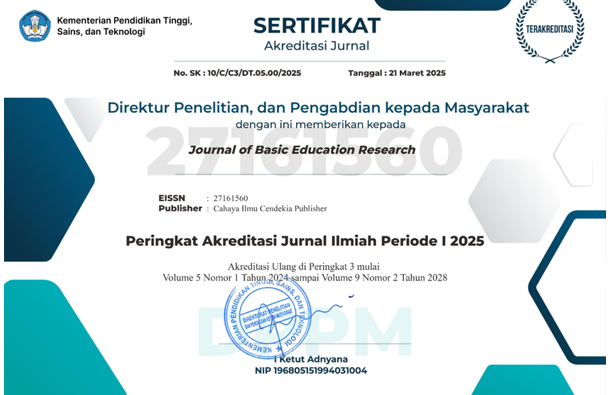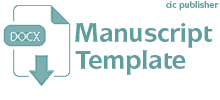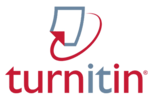Usability Analysis of Digital Learning Media Based on Google Sites Using the SUS Scale
Abstract
Purpose of the study: This study aims to evaluate the usability of digital learning media developed using Google Sites through a systematic and standardized measurement approach. The main focus is to identify whether the media is easy to use, engaging, and acceptable from the users’ perspective.
Methodology: This study employed the System Usability Scale (SUS) method, combined with a literature review of related studies. The SUS questionnaire was used as the main tool for data collection, while scoring and analysis were performed with standardized calculation procedures to evaluate usability outcomes.
Main Findings: The results showed that the digital learning media developed with Google Sites achieved an average SUS score of 79. This score falls into the “Good” category, equivalent to a grade scale of C, and is classified as “acceptable.” Users demonstrated positive perceptions regarding its usability, indicating effectiveness while also highlighting the need for further development.
Novelty/Originality of this study: This study provides new insights into usability evaluation of Google Sites as a digital learning medium using the SUS method. It contributes by highlighting practical user perceptions and offering evidence-based recommendations for further improvement, thereby expanding knowledge about effective integration of accessible online platforms in education.
References
V. P. Sabandar and W. P. Ramadhani, “Pemanfaatan google sites sebagai media pembelajaran berbasis web,” Ger. für Gesellschaft (J …, 2023.
S. & M. Ulfa, “Pentingnya Media Pembelajaran,” J. Pendidik. anak usia dini, vol. 1 No.1, pp. 81–96, 2017.
Fathahillah, R. T. Mangesa, Rachmaniar, and M. Z. R. Kasau, “Workshop pembuatan media pembelajaran inovatif bagi guru SMP di Kabupaten Takalar,” Vokatek J. Pengabdi. Masy., vol. 1, no. 3, pp. 321–325, 2023, doi: 10.61255/vokatekjpm.v1i3.260.
A. S. Pamungkas and N. Halimah, “Increasing interest and learning outcomes of elementary school students in style material through blended learning,” At-Tasyrih J. Pendidik. dan Huk. Islam, vol. 7, no. 1, pp. 62–76, 2023, doi: 10.55849/attasyrih.v7i1.150.
S. Santiani et al., Discovery Learning dalam Kurikulum Merdeka, vol. 1, no. 01. 2024.
M. H. Handiyani and Yunus Abidin, “Peran guru dalam membina literasi digital peserta didik pada konsep pembelajaran abad 21,” J. Elem. Edukasia, vol. 6, no. 2, pp. 408–414, 2023, doi: 10.31949/jee.v6i2.5360.
Abdul Sakti, “Meningkatkan pembelajaran melalui teknologi digital,” J. Penelit. Rumpun Ilmu Tek., vol. 2, no. 2, pp. 212–219, 2023, doi: 10.55606/juprit.v2i2.2025.
H. Hadidi and B. Setiawan, “Penerapan media pembelajaran e-learning berbasis google sites terhadap hasil belajar matematika siswa,” 2021, STKIP Persada Khatulistiwa. doi: 10.31932/j-pimat.v3i2.1395.
Lady Alfie, Sylvia Lara Syaflin, and Kabib Sholeh, “Pengembangan media pembelajaran siklus air berbasis digital siswa kelas V sekolah dasar,” J. Elem. Edukasia, vol. 6, no. 2, pp. 350–359, 2023, doi: 10.31949/jee.v6i2.5352.
A. Banarsari, D. R. Nurfadilah, and A. Z. Akmal, “Pemanfaatan teknologi pendidikan pada abad 21,” Soc. Humanit. Educ. Stud. Conf. Ser., vol. 6, no. 1, p. 459, 2023, doi: 10.20961/shes.v6i1.71152.
Menrisal, “Journal of digital learning and distance education (JDLDE) digital learning media: review,” J. Digit. Learn. Distance Educ., vol. 1, no. 4, pp. 131–139, 2022.
R. Maulana, C. B.Filzah, and G. Gusmaneli, “Optimalisasi media digital dalam desain pembelajaran abad 21,” J. Sade. Publ. Ilmu Pendidikan, pembelajaran dan Ilmu Sos., vol. 3, no. 1, pp. 52–65, 2024, doi: 10.61132/sadewa.v3i1.1440.
S. Aisyah, L. Lusiana, and A. M. Retta, “Pengembangan media pembelajaran berbasis google sites pada materi bangun ruang,” 2025, Muhammadiyah Metro University. doi: 10.24127/ajpm.v14i1.10763.
U. Umihani, Pengembangan bahan ajar model discovery learning menggunakan media digital di SMA N 1 Terbanggi Besar. Jurnal Teknologi Pendidikan: Jurnal Penelitian dan Pengembangan Pembelajaran, vol. 8, no. 1, pp 164-172, 2023.
P. Fisika and U. Negeri, “Meningkatkan pemahaman konsep siswa kelas,” vol. 13, no. 69, pp. 259–272, 2013.
R. Pratama, M. Alamsyah, M. S Ferry, and G. Marhento, “Pemanfaatan google site sebagai media pembelajaran IPA,” Pros. Semin. Nas. Sains, vol. 4, no. 1, pp. 12–15, 2023,
D. Google, “El uso didáctico de,” pp. 63–74, 2017.
K. Hidayati, A. Rahmawati, and D. S. Wijayanto, “Effectiveness of using google sites-based learning media to improve critical and creative thinking abilities of vocational school students,” JPPI (Jurnal Penelit. Pendidik. Indones., vol. 10, no. 3, p. 632, 2024, doi: 10.29210/020243964.
R. R. Yusuf, T. Abdjul, and C. S. Payu, “Validitas, kepraktisan, dan efektivitas bahan ajar berbantuan google sites pada materi getaran, gelombang dan bunyi,” Ideas J. Pendidikan, Sos. dan Budaya, vol. 9, no. 1, p. 199, 2023, doi: 10.32884/ideas.v9i1.1115.
R. H. Bangun, J. Sitompul, and H. Fibriasari, “Google sites as learning media in the material development of advanced reading comprehension,” Int. J. Res. Rev., vol. 9, no. 7, pp. 519–525, 2022, doi: 10.52403/ijrr.20220756.
K. Merdeka, “Peran guru dalam pemanfaatan media digital pada pembelajaran bahasa indonesia sebagai perwujuduan kurikulum merdeka,” Jurnal Ilmu Pendidikan, vol. 5, no. 2, 2025.
S. I. Basyori, “Google sites improves student learning outcomes on plant material,” 2025, Universitas Muhammadiyah Sidoarjo. doi: 10.21070/ijins.v26i3.1423.
I. Ristanti, S. Apriliya, H. Y. Muslihin, and U. P. Indonesia, “Utilizing google sites to improve reading literacy in,” Jurnal Cakrawala Pendas, vol. 11, no. 3, pp. 727–740, 2025.
A. P. Zaibintoro, P. Dellia, K. Toyybah, I. Anifah, S. K. Sa’diah, and A. Mustofa, “Analisis sistem portal tugas akhir universitas trunojoyo madura menggunakan metode system usability scale,” J. Nas. Komputasi dan Teknol. Inf., vol. 7, no. 4, pp. 740–748, 2024, doi: 10.32672/jnkti.v7i4.7740.
E. Rustamaji and D. A. K. Firdausi, “Analisis usabilty aplikasi google classroom menggunakan metode system usability scale (SUS),” 2024, Universitas Islam Indragiri. doi: 10.32520/jupel.v6i2.3291.
H. Y. Madawara, D. Manongga, and H. Hendry, “Evaluasi ketergunaan website perpustakaan universitas kristen satya wacana dengan menggunakan metode system usability scale,” J. Pendidik. Teknol. Inf., vol. 6, no. 2, pp. 44–55, 2023, doi: 10.37792/jukanti.v6i2.933.
I. M. A. Sudestra, N. W. E. Agustini, I. M. A. O. Gunawan, G. Indrawan, and M. Hakimi, “Improving digital learning: evaluating the u learn lms with the system usability scale,” JIPI (Jurnal Ilm. Penelit. dan Pembelajaran Inform., vol. 9, no. 4, pp. 2325–2332, 2024, doi: 10.29100/jipi.v9i4.6910.
V. D. Wicaksono, H. P. Paksi, and . S., “Google sites as ICT learning in indonesia: The benefits and implementation,” 2023, Knowledge E DMCC. doi: 10.18502/kss.v8i8.13303.
R. M. N. Ramadhan, “Evaluasi usability sistem informasi sitabah tanggap bencana dan musibah menggunakan metode system usability scale (SUS),” J. Inform. Multimed. dan Tek., vol. 9, no. 2, pp. 24–29, 2024, [Online]. Available: https://qjurnal.my.id/index.php/jimt
D. Fabiyanto and Y. Rianto, “Performance evaluation of multiple machine learning models for wine quality prediction evaluasi kinerja multiple model machine learning untuk prediksi kualitas wine,” J. Inform. dan Teknol. Inf., vol. 21, no. 2, pp. 209–223, 2024, doi: 10.31515/telematika.v21i2.
Copyright (c) 2025 Neneng Rostika, Yunus Abidin, Dede Trie Kurniawan

This work is licensed under a Creative Commons Attribution 4.0 International License.
Authors who publish with this journal agree to the following terms:
- Authors retain copyright and acknowledge that the Journal of Basic Education Research is the first publisher licensed under a Creative Commons Attribution 4.0 International License.
- Authors are able to enter into separate, additional contractual arrangements for the non-exclusive distribution of the journal's published version of the work (e.g., post it to an institutional repository or publish it in a book), with an acknowledgment of its initial publication in this journal.
- Authors are permitted and encouraged to post their work online (e.g., in institutional repositories or on their website) prior to and during the submission process, as it can lead to productive exchanges and earlier and greater citation of published work.





.png)


.png)
.png)


















